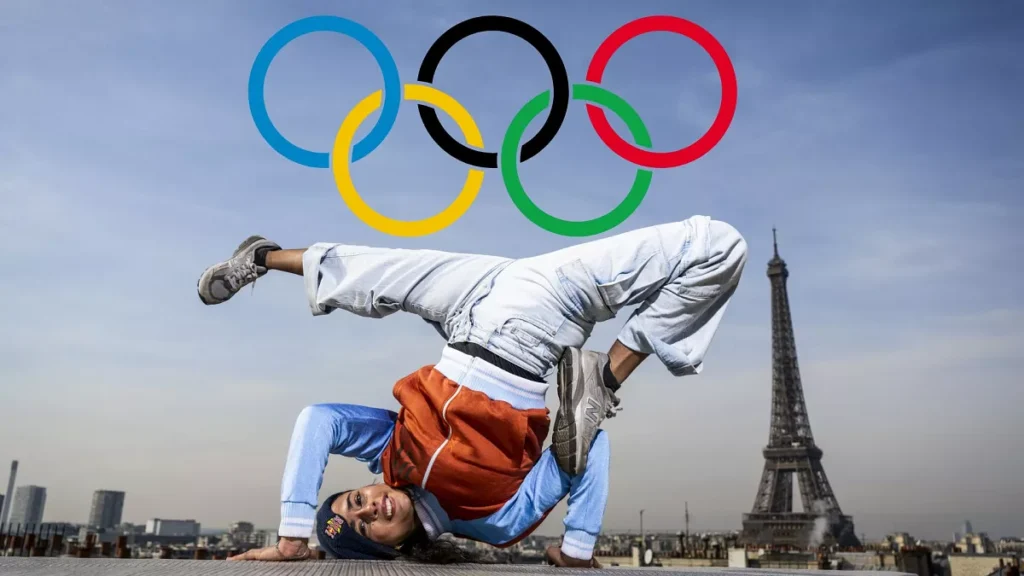Breakdancing at the Olympic Games

the arrival Breakdancing at the Olympic Games: A Historic Milestone. Breakdancing, also known as breaking, has come a long way from its origins in the Bronx to its recognition as an Olympic discipline.
The decision to include breaking in the 2024 Paris Olympics represents a pivotal moment in the history of hip-hop culture and the world of sport, making it clear to the world that breaking is also a dance that requires extensive training and discipline with little support.
The road to the Olympic Games
The process of recognizing Breaking as a sport began with its inclusion in renowned international competitions, such as the 2018 Youth Olympic Games in Buenos Aires.
Its success at this event sparked the interest of the International Olympic Committee (IOC), which decided to include it in the 2024 Olympic Games.
Its integration is due to the fact that Breaking moves a lot of people and especially young people, it is a dance that requires a lot of training with values of discipline and improvement where the majority of bboys and bgirls are teenagers or children.
The rules and competition format at the Olympic Games
Unlike street battles or events like Red Bull BC One, the breakdancing competition at the Olympic Games follows a structured format.
Sixteen B-boys and sixteen B-girls compete in one-on-one duels, where a specialized jury evaluates elements such as musicality, originality, technique, and execution. Scoring is based on sporting criteria, ensuring a fair and balanced competition.
The evolution of breaking from the street to elite sports
Since its beginnings on the streets of New York, Breakdancing has gone through various stages of evolution.
What began as a form of cultural expression and a game has transformed into a highly technical and competitive discipline, with rules, judges, and an impressive level of rigor. It continues to evolve every year.
The Bboys and Bgirls who will make history at the Olympic Games
Many B-Boys and B-Girls have trained for years to represent their countries at Paris 2024. Figures like B-Boy Menno, Bboy Phil Wizard, B-Boy Victor, B-Girl Ami, and B-Girl India are some of the names that are emerging as strong contenders. Breakdancing's inclusion in the Olympic Games gives them the opportunity to showcase their talent on the world's largest sporting platform.
What was the breaking competition like at the Olympics?
The competition featured 16 B-Boys and 16 B-Girls selected from around the world, who faced off in 1 vs. 1 battles.
First in qualifying filters and then moving on to the elimination competition as if it were the Champions League of football.
The breakdancing judges evaluated aspects such as musicality, originality, technique, cleanliness, and execution of the movements.
The impact of Breaking on the world of sport
Breaking's inclusion in the Olympic Games has generated divided opinions. While many celebrate the recognition of this discipline, some fear it will lose its streetwise and artistic essence.
However, most dancers see this as a great opportunity for the growth of Breaking on a global level.
The impact of breaking on urban culture and the sports industry
With its inclusion in the Olympic Games, breakdancing has not only gained recognition but also sparked the interest of sports brands, sponsors, and media outlets. Major companies such as Nike, Adidas, and Red Bull have begun investing in breaking athletes, giving them greater visibility and professionalization.
What does this milestone mean for future generations?
Being at the Olympic Games will inspire new generations to enter this world, fostering the development of more professional academies and training.
The controversy within the Breaking community
While the inclusion of breakdancing in the Olympics has been celebrated by many, it has also generated intense debate within the community.
For some B-Boys and B-Girls, breaking is an artistic and cultural expression that shouldn't be pigeonholed within the rules of a sport. They argue that breaking battles originated in the streets, where creativity, improvisation, and connection to music are the most important elements, while the Olympic Games prioritize technical criteria and structured scoring.
Legendary breaking figures such as B-Boy Storm and B-Boy Ken Swift have repeatedly expressed their concern about the direction breaking could take if it is considered a sport.
They believe that by institutionalizing breaking within an Olympic competition, there is a risk of losing its essence and its connection to hip-hop culture.
Furthermore, many argue that breaking is much more than just physical movements and acrobatics; it's a way of life, a connection to music, and a way of telling stories through the body.
Some people are concerned that the Olympic approach could turn breaking into a mere athletic routine, losing the energy, flow, and street essence that made it famous in the first place.
Despite these criticisms, most of the community has recognized that this inclusion also brings opportunities.
Conclusion
The inclusion of breakdancing in the Olympic Games is a recognition of the efforts of generations of B-Boys and B-Girls.
Now, the world will be able to see and appreciate Breaking as a discipline that combines art, culture, and sport.
What do you think about the arrival of Breaking at the Olympic Games? Leave us your comment and share this article with your community. Let's continue spreading Breaking culture around the world!
If you want to read more related articles, you can do so. here!